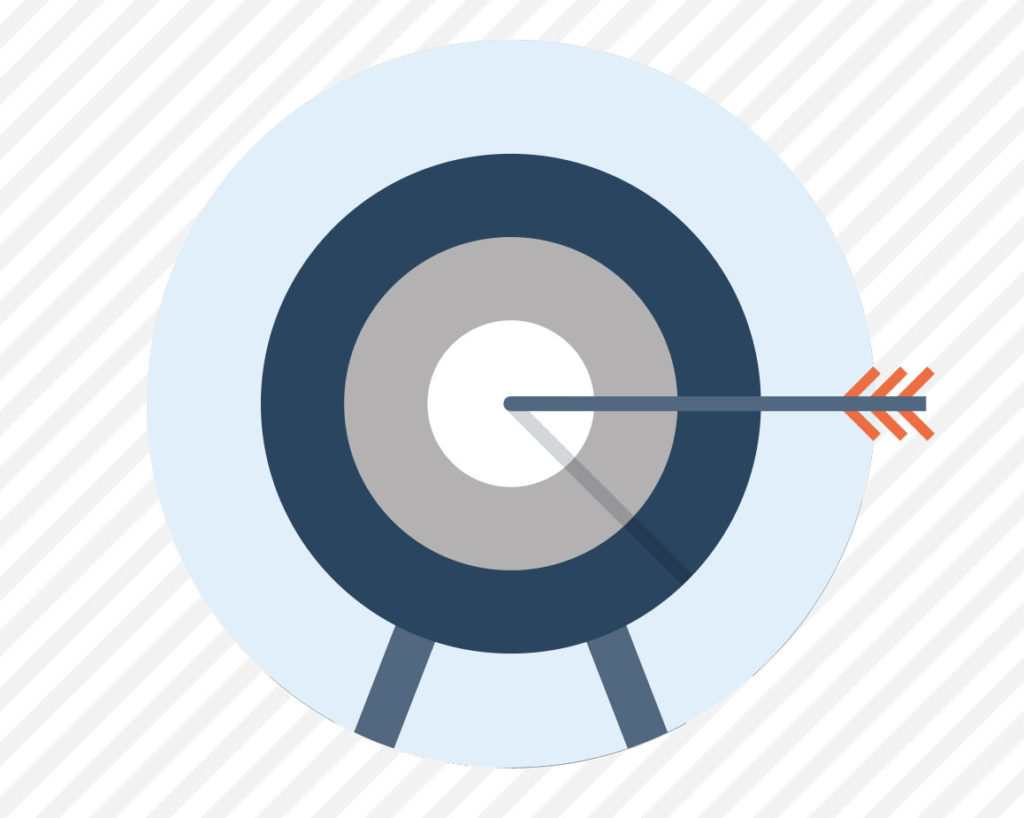We’ve all been there. You have finally come up with an exciting idea for your first blog post. So, you sit down to write. But then…
Nothing happens. Despite all of the ideas you have swirling in your head, you just can’t bring yourself to put those thoughts into a readable format that your audience can consume.
Does that sound familiar?
You’re not alone in that fight! While many people think that blogging is fun, light-hearted, and easy, any established writer will tell you that’s not always the case. Creating blog posts can be a joy, but it’s also a lot of work. If your livelihood depends on the quality of your posts, the stress of creating perfect content can be debilitating!
Imagine being able to knock out high-quality blog posts whenever inspiration hits. If instead of spending hours just trying to figure out the mechanics of blogging, you could just write serviceable posts that your readers will love.
In this ultimate guide, we’re going to show you how! Truth is, there’s a bit of a formula for writing good blog posts. You have to know how Internet users consume content, what they’re looking for, and how to give them what they need. Check out our step by step guide to learn everything you need to know.
Step 1: The Planning Phase

Contrary to popular belief, most blogs aren’t just written on the fly. It takes some real thought and plenty of time to craft the perfect post. Depending on the goals of your content and the topic you’re covering, you can spend several days in the planning phase alone.
Don’t let that discourage you! This is a very important part of the process and taking time to do things just write can make all the difference. Here are some things you need to cover before you even type a single word.
Choose a Relevant Topic
First things first, what are you going to even write about? Sometimes, finding a topic is half the battle. Take some time to figure out what it is you want to create and start branching out until you land on the right idea.
Stick with something relevant to your niche. You can take a look at readers’ comments to gain inspiration. You can even turn to social media or see what some of your business competitors are doing.
Figure Out What Your Audience Wants
Don’t forget to take your audience into account when you’re choosing a topic and planning a post. At the end of the day, the goal of content marketing is to appeal to your target demographic while gaining some new followers in the process.
Again, take a peek through the comments section. Is there a topic that’s being brought up frequently? Are there readers asking questions? Take this opportunity to really understand who your audience is. Put yourself in their shoes and write a post that they want to read.
Find the Right Approach
Chances are, there are already a ton of articles online about the topic you’re interested in writing about. At this stage in the game, it’s inevitable. But that doesn’t mean that you need to give up and try to find that elusive topic that hasn’t been covered yet.
You can still write about things that other blogs have covered. You just need to be better!
Find a unique approach to the topic at hand. See how your audience relates to the topic and find an angle that works. Take, for example, a blog about some great technology that’s about to come out. Instead of writing a basic informative blog about what a specific gadget has to offer, why not offer something new?
You could write about more affordable alternatives that are available right now. Or, you could see how it compares to other products. The possibilities are endless.
Write About Something You’re Passionate About
Internet users are savvier than most people think. They can see right through a blogger that has no passion for what they’re writing about.
We get it: It’s not always possible to write about something that interests you. If you’re creating simple blogs for your business, things can get mundane pretty quickly.
The trick is to make things interesting. This doesn’t just benefit you during the writing phase, but it’ll keep your audience captivated, too. It all goes back to your approach. Come up with a fun way to write about the topic you’re discussing. Don’t be afraid to think outside of the box. Once you have that inspiration, you’ll be surprised by how passionate your writing becomes.
Do Your Homework
Once you have your blog post ideas narrowed down to one topic, you need to do as much research about it as possible. Credibility is huge in the world of blogging. You should strive to become an authoritative source for your readers. To do that, you have to provide accurate and relevant information.
Use authoritative websites to source information from. Don’t just rely on Wikipedia or other blogs. Take advantage of Google to find industry data, research papers, or government sites. All of this information you collect will prove to be very useful once you start crafting your post. Not only that, but providing links to all these sources is going to help you with your SEO efforts.
Fact Check Everything
Don’t stop at collecting information. Take things a step further and fact check as much of that information as possible.
Hoaxes and misinformation run rampant on the Internet. It’s only gotten worse in recent years because not enough bloggers are going through the fact-checking process. Just because another blog states something as fact doesn’t mean that it’s true. You’d be surprised at how easy it is for rumors to start.
If you were to accidentally source wrong information as fact, you’ll instantly receive a hit to your credibility. There have even been major lawsuits filed because people didn’t check their facts. In the age of “Fake News,” it’s more important than ever to ensure that every bit of information you’re providing to your readers is accurate.
Create an Outline to Guide You
Once you have your topic and research in hand, it’s time to create your outline. Your outline will act as a guide to help you stay on-topic as you write. This is a crucial part of the process. Regardless of how simple and manageable your post is going to be, it pays to be prepared.
Your outline can be as simple or complex as you want it to be. Some bloggers like to separate their ideas into concrete sections that they can manage. Others will simply create a list of points they want to touch on. The choice is yours, so do what works best for you.
Pro Tip: It’s a good idea to adjust your outline as you work. Personally, I like to create an outline using headers and sub-headers. Typically, I don’t come up with specific header titles until later on in the process. We’ll get into that in a bit.
However, I’ll use general headers to help me stay on track. Oftentimes, more ideas will come once I do create those headers. So, my outline will need some adjusting. You don’t need to stick to your outline 100 percent. It’s a guide after all. Make your outline flexible enough to accommodate creative ideas as they come. This will also be beneficial if you’re working with an editor or supervisor who may want to make some edits before you start writing.
Step 2: Craft a Great Headline to Grab Attention
Now, it’s time to create your headline! Also known as the post title, this is going to be the very first thing your readers see. Thus, you need to make sure that it can grab your readers’ attention.
In just a few seconds, your audience will decide if they want to continue reading or if they want to pass on the post. There are many ways to craft a headline. Here are some tips you can follow to get there.
Make It Approachable
Have you ever seen a headline that made absolutely no sense to you? Unfortunately, they’re far too common in the blogging world. Many writers will try to come up with witty titles.
It’s not uncommon to see made-up words, weird metaphors, or rhymes. Sure, they might look cool. But, they don’t do much to actually attract readers.
Your headline should be approachable and easy to understand. Remember, the title is going to tell your readers what your post is all about. Keep it succinct and very easy to understand. Otherwise, you’ll just confuse people and drive them away!
Use Something That Works
If you’re having difficulties coming up with a good title, don’t be afraid to look at popular posts from your competitors. Many bloggers make the mistake of trying to be too unique. Having a distinct headline is important, but you don’t need to be so out of the box that people get confused.
There are tons of tried and true headline formulas that you can try out. For example, “How To” posts are pretty popular these days. Those titles are proven to work. They give readers all the information they need to know about your posts. Not only that, but it’s a distinct formula that works very well with your search engine optimization efforts.
You can also provide some eye-catching information. This works well with case study blogs that cover important facts. Informative headlines work well in SEO as well because your title may be an answer to a question someone is searching for.
Another blog example would be a “Top Ten” list. Also known as listicles, these types of posts are known to attract a sizable audience. If your posts are covering multiple products, topic ideas, or subjects, why not keep it simple and explain that in your headline?
If you are looking for more inspiration check my blog post idea generator
Give a Small Preview
Providing a small preview about what the post is about is a great way to get readers interested. If they were looking for that particular topic, half the battle is already won.
With that said, you need to provide a small preview without giving too much away. Your headline shouldn’t give away all the answers. After all, the goal is to get people to read the post. If the answer to their question is right there in the title, why would they feel the need to read more?
Let’s look at a couple of examples…
Say that you’re running a blog about raising puppies and want to cover proper training techniques.
A bad title would be, “How to Effectively Train Puppies With Voice Commands.”
If the question is, “How to effectively train puppies,” you’ve already answered that question with the last part of the title. Readers looking for training techniques will see that and move on.
A better alternative could be, “How to Train Puppies With No Experience.” That headline promises an answer to the question without giving too much away.
Make It SEO-Friendly
As much as successful blog owners like to avoid taking about monetization, it’s an important thing to cover. Let’s face it: blogging is a big part of your business. You need to master it to be successful in this arena. We won’t get into the finer details of SEO here.
However, we will say that your headline can affect your search engine result page rankings. When you take a look at any SERP, you’ll notice that some headlines are truncated or cut off. There’s only so much room that Google can provide for titles. The search engine is not going to make exceptions just because you were a little wordy with your title.
If you want to make sure that your post titles are visible on result pages, keep your titles to 60 characters or less.
Edit your headline and remove any superfluous words to make sure that it fits nicely.
Be Honest
While it can be tempting, you should never click-bait your audience. Your headlines should provide honest information about what your post has to offer. Don’t make big promises that you can’t keep.
Not only will this turn off visitors, but it can have a huge effect on your credibility and SEO rankings.
Be Concise
You should always edit your headline and trim some of the fat. Again, try to stick to 60 characters or less. The fewer the words, the better. Why is that?
Well, longer headlines are simply too overwhelming. Filling your titles with unnecessary words can have the opposite effect of what you want.
Examine the title closely and see what weak words you can remove. Replace those words with powerful words that pack a bigger punch.
For example, here’s a bad title:
“Learn the Fine Art of Sewing So That You Can Create One-of-a-Kind Outfits That Will Turn Heads Wherever You Go.”
It’s a bit mouthy, isn’t it? Instead of that wordy title, try something a bit simpler like:
“How to Sew Custom Outfits.”
Show Your Personality
Last, but definitely not least, don’t be afraid to show your personality! Don’t forget: Your headline is a preview to the rest of your content. It should match your writing in both style and tone.
Step 3: Write a Killer Introduction

So, now you have captured the attention of your target audience enough for them to start reading your post. Your job isn’t done just yet! Getting people to continue reading is a difficult task all on its own. Your headline was just the bait. Now you need to hook your reader and make them interested enough to keep reading.
Empathize with Your Readers
One of the best ways to connect with your audience is to simply empathize with them. Many bloggers make the mistake of just hitting readers over the head with cold hard facts right off the bat. While facts are appreciated, emotional wordplay does a much better job of captivating audiences.
It lets them know that you understand what they’re looking for.
Take a look at the introduction of this post. See how I empathized with you by acknowledging your struggles and identifying your needs?
Put yourself in your readers’ shoes and talk to them like real human beings. You’d be surprised by how far something so simple will go.
Build Them Up, Them Break Them Down
This is one of my favorite introduction tricks to utilize. It’s similar to empathizing with your readers. However, the key difference is that you’re going to show your readers the light at the end of the tunnel.
Basically, this technique involves addressing the end goal of whatever the topic is about. You’re showing them that the goal is possible. You’re also giving them the opportunity to think about achieving it.
Then… you bring them back to reality and acknowledge their current situation without the information you’re about to provide.
Essentially, you’re showing readers that the post they are about to read is the catalyst to make their goals happen.
Create Open Loops
In the writing world, open loops are a powerful tool that you can use to keep people reading. Fundamentally, it’s a tease to some information that you’re going to provide later. You may mention that information briefly before going into the full details.
Let’s look at an example. If you’re writing a blog about planting roses, you have several ways to create an open loop in your introduction. Here’s one way:
“Roses can be a bit difficult to care for. Not only do they require good temperatures, plenty of water, and the right fertilizer, but they also have very strict soil composition requirements. We’ll get into those requirements a bit later.”
Did you catch the open loop? That introduction only mentioned soil composition requirements. Then, the author stated that they would touch upon that information later on in the article.
The reader will see that and realize it’s an important bit of information later. So, the author can continue on with the article and close the loop later by including a section devoted to those soil requirements somewhere in the middle of the article.
Ask Questions
Have you noticed that I have included a lot of questions in this post? Questions offer a number of great benefits, especially in the introduction. First, it helps you connect with the reader. It’s a way to address their concerns while also showing off a bit of your personality. In a way, it also creates a bit of personal dialogue between the author and the reader.
Secondly, questions can lure readers down further into the article. You can ask questions that your reader may have, hinting that you have answers in your post.
Step 4: Writing Your Blog Post

Only after you have created your outline, headline, and intro can you start the actual writing process. Believe it or not, this is the relatively easy part. At this point, you should have already done your research and created a guide to help you out. Now, it’s all about following through and creating a good blog post that your readers will find useful.
1 – Work in Small Sections
When new writers start their first blog, they often try to write entire posts out in one sitting. While this can work for some authors, it’s not exactly productive for most.
Burnout and writer’s block are very real things that could affect your writing skills. Take a breather every once in a while. You can write your blog in sections to make things more manageable.
2 – Break Things Up Into Readable Chunks
No matter how well you write your introduction, many people are going to skim your blog posts. It’s just a fact of Internet media. People are looking to find the information they want quickly.
To make that easier for them, separate your blog post into several small sections. This makes it easy to skim and increases the likelihood that they will stay on your page rather than looking at a competitor’s. Utilize attractive subheadings that identify what a section is about. You can also implement bullet points, numbered lists, and anything else that makes your piece easy to skim through.
3 – Don’t Beat Around the Bush
When you’re providing all of that research you found, be generous. Don’t beat around the bush and give your readers light information that they could have found on their own with a simple Google search.
That doesn’t mean that you have to write a small novella to discuss your topic. Make every sentence count and provide as much useful information as possible.
4 – Make Things Fun For You and Your Readers
While you still need to provide your readers with the facts they are after, that doesn’t mean you have to make your post boring. If you want your audience to come back, keep your posts fun. Insert your personality and make the text enjoyable to read.
5 – Keep Things Consistent
This is an important tip to remember if you’re writing your post in smaller sections. You must keep sections consistent. This applies to format, writing style, tone, and more.
We recommend going back and reading other parts of the post before you work on the next one. Get back into the right headspace to ensure that your piece doesn’t look like it was written by more than one person.
6 – Make Your Post Very Easy to Read
Don’t let facts and information turn your post into a term paper! Keep readability and enjoyment in mind when you’re composing your article. Most people browsing the web don’t want to read a collegiate-level piece filled with ten-dollar words. Keep things simple and manageable for all readers.
7 – Don’t Go Overboard with SEO
Great blog posts utilize SEO techniques strategically. Be smart about how you use keywords and make sure that they are inserted naturally. Nothing can take a reader out of it more than an awkwardly placed keyword. SEO is important for any blog. However, providing enjoyable and authoritative content is even more important.
Step 5: Implement Other Forms of Media
You don’t have to limit your blog post to just text. Most blogging platforms, including WordPress, make it very easy to implement other types of content. You can use videos, photos, and even interactive plugins. Here’s how to use that content seamlessly.
Use Images or Videos to Illustrate a Point
What better way to illustrate a point than with some visual media? Like we mentioned earlier, many people will browse blog content if they’re looking for specific information. Images can act as a secondary subheader to give readers a better idea of what a section is about.
You can also use graphics to help your audience visualize specific concepts. Infographics and demonstrative videos are particularly useful for this. There are tons of places to get great content that you can use, so don’t shy away from it!
Be Strategic and Improve Flow
The worse thing you can do is just input screenshots and images randomly throughout your page. You need to be strategic in how you place the content. There are many principles that web designers follow based on how the eye moves through a page.
You can use those concepts to dramatically improve the flow of your post. Break up large chunks of texts with an image to give the eyes a break. Or, implement a photo and wraparound text to guide the reader to the next section.
Create the Punchline
Remember how we said to keep things fun? One way that you can do that is with a visual punchline. Quirky photos can complement your text and make an otherwise boring topic seem a bit more exciting.
Consider Your Site’s Performance
Before you start plastering videos and plugins onto your site, you need to consider the performance impact that content will have. Connection speeds and load times play an important role in a site’s success. Most people will leave a blog if it takes longer than a few seconds to load.
The more content you put on the page, the longer it will take to load everything up. Luckily, many hosting providers have features to help offset slow load times. Bluehost, for example, has some great caching systems to make media load quickly. Take advantage of those to improve your site’s performance.
Step 6: The Closer

You can’t forget about the closer. Many new bloggers don’t put a lot of thought into how they are going to end their post. It’s quite obvious, too. Use your closer as a chance to give your readers one final push. You can also take the opportunity to impress them one last time so that they keep coming back to your blog.
Motivate Your Audience
People respond to motivation very well. You have just provided your reader with a ton of useful information. So, why not push them to use it and achieve their goals! End with a CTA, or call to action. A CTA is great for inspiring your readers and getting them to come back for more.

Example of a CTA would be a email sign up CTA.
Keep It Short
Don’t spend too much time on the closer. Your closer should be short, sweet, and to the point. In addition to a CTA, you can do a quick recap of the post. That’s it. There’s no need to write a ton of text to pad the word count. As long as you got your message across, you can end your post.
Don’t Provide New Information
One big no-no of blog writing is providing brand-new information in your closer. You’re wrapping up your post and giving a CTA. You should be giving any new information, as this can be a bit jarring and confusing for the reader.
Consider the Takeaway
No matter what type of closer you’re doing, it’s always a good idea to think about what your reader is taking away from the post. Once again, put yourself in their shoes. Did the post provide them with the information they needed? What is going to be the big thing they remember?
Ideally, your readers will know all of this by the time they get to the end of the post. But, you can remind them to provide a bit of a positive end to the experience.
Step 7: Edit
Finally, you have finished your blog post. Does that mean you can publish it now?
Not quite yet. We definitely recommend stepping away from your first draft for a bit after you have finished writing it. However, you still need to go through the editing process.
Editing can help you find mistakes and make those last-minute changes you need to help your post reach its full potential.
Use Grammar and Spell Checkers
This should go without saying, but always put your piece through some spelling and grammar checkers. Grammarly is a great piece of software that you can use to spot grammatical errors and potential punctuation problems.

At the very least, your post needs to be free of typos. A typo-ridden blog post will only harm your credibility.
Read It Out Loud
Don’t just rely on software to do the proofreading. While grammar and spelling apps are great for catching glaring issues, human language is far too complex for programs to judge perfectly.
The best way to catch subtle errors is to read it out loud. Reading your post as a speech can help you identify minor problems and flow issues. You can then make the necessary changes to improve readability as much as possible.
Get a Second Opinion
Sometimes, a second pair of eyes is all you need to see things you didn’t spot earlier. Give your post to someone else to read. Not only can they catch grammatical or spelling errors, but they will be able to give you their honest thoughts about the piece.
You have spent a lot of time working on the post. Despite all of your hard work on your own blog, there may be sections that just don’t work. Having someone else read through your post is a good way to gauge how it will work with your audience.
Use a Thesaurus
When you’re writing blog posts, it’s important to avoid repetition. You’re bound to find some repetitive phrases within your work as your proofread. [easyazon_link identifier=”0199829926″ locale=”US” tag=”makeawebsitehub-20″]Whip out a thesaurus[/easyazon_link] and look for other words that you can use.
Don’t Be Afraid to Make Cuts
As hard as it is to do, you might have to make some cuts to your content. Keeping the blog fresh and exciting are your number-one goals. If some text doesn’t flow well or doesn’t add value, remove it. The post will be much better off.
Address Readability Issues
Earlier, we mentioned that your post needs to be readable to the masses. There are many readability tools out there that gauge the approximate reading level it takes to comprehend your words. Take advantage of those tools and keep things relatively light. Just because your post has a lower grade level doesn’t mean that it is of lesser value. In fact, it’s quite the opposite. Good readability makes your post easy to understand for everyone.
Check Transitions
Pay close attention to section transitions. This is an area where many new bloggers have trouble maintaining the flow of their articles. Sections should seamlessly flow from one to the next. Abruptly switching to a new topic can make the piece feel disjointed. Plus, it will harm readability.
Optimize As Needed
During the editing process, you can implement social media and SEO techniques. Insert an email list form at the bottom of your post and provide buttons for all your social networks. Fun plugins to instantly send out a tweet or participate in social shares are a great way to increase your traffic in the long run.
As for SEO, you can use analytics tools to find appropriate keywords that you can insert throughout your post. Keyword research helps you find words that people use to find content like yours. Like we said earlier, be strategic about how you use them. Make sure that they are seamless and smooth.
Conclusion
There you have it: our free guide on how to write a blog post! While writing isn’t always easy, it doesn’t take much to get on track and craft a memorable piece.
Blogs are a dime a dozen these days. If you want to stand out and get your voice heard, you need to create the very best posts possible. Following these tips will help you do just that.
So, what are you waiting for?
Go start a blog and get writing! You can get a free domain and an affordable hosting plan from Bluehost to get started. Once your account is set up, use these tips to create a killer first post and start building your audience.

Jamie Spencer
Latest posts by Jamie Spencer (see all)
- How to Start a Successful Cryptocurrency Website - September 12, 2024
- 50+ Ways To Advertise Your Business For Free On The Internet – 2024 Guide - September 5, 2024
- The Fastest WordPress Hosting Providers 2024 – If You’re Not Fast…You’re Last!!! - July 8, 2024
